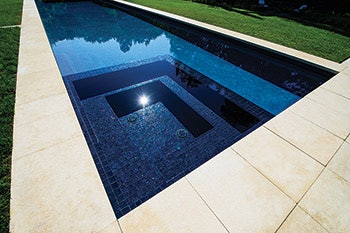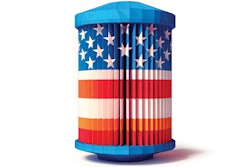With so many options for filtration technology, we are often asked, "What do you use?" as if we had filtered down the options to just one product (pun intended). The truth is that our "preference" is often dictated by the project requirements and we make fewer choices than we would like. So the answer to the question about what we use is not a specific product — instead, we need to identify the pros and cons of the primary technologies and then assess every project on a case-by-case basis. Here are some primary considerations:
Residential vs. Commercial
Before we consider the various technologies, it is important to understand that residential and commercial projects can have very different requirements and some systems are simply incompatible with certain types of projects. Consider vacuum D.E. for example — I am unaware of any residential-grade vacuum D.E. systems being marketed today. Likewise, only small commercial projects would consider using a cartridge filter due to its higher maintenance as compared to, say, a sand filter with an automated backwash.
Water Use
The Wild West has been in a prolonged drought, although recent indications are that the weather is already turning around (reservoirs in Texas are filling up, San Diego has had the wettest May in history). Still, some filters waste more water than others and this may be a critical factor in selecting the type of filter to be used.
Sand Filters
I think most people will be surprised to find that my first choice on many projects is sand filtration. When done right it is very effective and is the simplest to operate; it is easy to automate the backwash with simple valve actuators and basic automation. This means that even for residential projects, we can set up the pool controller with a backwash mode that is initiated with the click of a button and executes a predetermined run time of two minutes using the egg-timer configuration. What could be easier to maintain than pushing a button without even going outside?
Some will argue that sand filtration does not filter down as fine as cartridge or diatomaceous earth. That is true if you are comparing a single pass through the filter, but as the sand gets dirty it begins to collect smaller and smaller debris. This is enhanced by the use of advanced oxidation (which I am a big fan of) because of the micro-flocculation properties of ozone.
{bglink 4197}Most importantly, when it comes to sand filters it is important to understand that the unit flow rate must be kept low. The manufacturers like to publish unit flow rates up to 20 gpm per square foot (measuring the cross-sectional area of the filter bed). This flow rate won't work because the water channels through the sand making it ineffective as a filter bed. A much better target is 12 gpm per square foot. Occasionally we might end up with a system pushed to 15 gpm per square foot but that is the absolute maximum. Even sophisticated municipal water treatment plants with 24/7 monitoring don't operate above that, so don't let the manufacturers convince you that they magically solved that with small filters.
Regarding the water use issue, we have found that a 36-inch diameter sand filter can be cleaned in two minutes at 106 gpm, which is 212 gallons. This will, of course, vary by manufacturer, backwash frequency and environmental conditions of the pool.
I've heard people say sand requires a lot more water to clean than a cartridge filter, but if the cartridge filter has four elements, each requiring two minutes of scrubbing with a garden hose at 12 gpm, then that is 96 gallons of cleaning water. Add that to the 40 gallons of water in the filter that gets dumped onto the ground plus a little more hose water to rinse the inside of the filter, and you will see that cleaning a cartridge filter approaches the same water use as a sand filter.
When I teach classes with Genesis 3, I often point out that SeaWorld uses sand filtration to maintain the water clarity in their marine mammal exhibits. At those exhibits, you're looking through clear acrylic windows all the way to the other side — and that's a pool where Shamu regularly defecates in the water! Hopefully your pools won't have that issue, but rest assured that even sand filtration can make the water look crystal clear.
Cartridge Filtration
 Click to enlarge
Click to enlarge
This is an excellent choice in many situations, including basic residential pools, small commercial pools and pools with limited equipment room space. They filter well and handle high flow rates in a relatively small package because with their pleated filter elements they can offer large surface area. Using a maximum unit flow rate of 0.375 gpm per square foot, a 320-square-foot cartridge filter is capable of up to 120 gpm in a filter that is only about 21 inches in diameter, compared to a 36-inch diameter sand filter only capable of 85 gpm.
My only complaint about cartridge filters is the maintenance. It requires tools, time, and labor to dismantle the filter and clean the elements and housing before reassembly. Service professionals probably love them if they are charging a specific fee for that work but do-it-yourself homeowners don't like them. This also makes them impractical for larger systems where multiple filters just become unbearable to maintain.
{bglink 4203}The maintenance issue generally drives us toward sand filtration on commercial projects. In-house staff typically have enough work to do in other areas of the property to keep them busy, so the task of manually cleaning cartridge filters gets delayed beyond the ideal time — and thus the health of the water can suffer. In some cases the cartridges have even broken through and leaked their contents back to the pool, requiring replacement elements instead of cleaning.
Diatomaceous Earth
{bglink 4188}We rarely use D.E. these days. Dealing with the D.E. is even more difficult than cleaning a cartridge filter and since I can get truly pristine water from a sand filter system with advanced-oxidation (ozone + U.V. sterilization) then I see little benefit in complicating the maintenance with D.E.
Vacuum Sand
For large commercial pools, vacuum sand might be the way to go. When recently working with Connecticut builder Drakeley Pools, we used a Paddock system on a competition pool for a private school. The system will perform similar to a high-rate sand filter, but the way the filter is integrated into the surge basin makes for an efficient use of space. Maintenance is fairly easy by adjusting butterfly valves from the comfort of the platform above. Vacuum D.E. is an old twist on this technology but again I don't value the perceived benefits of D.E. any longer.
Regenerative Media
High-tech regenerative media filters such as Neptune Benson's Defender series are going to be important solutions to the water shortage issues that plague many parts of the world. These filters use automation and waste very little water to clean themselves. Unfortunately, the technology comes at a price that is cost prohibitive for anything other than large commercial projects. It would be interesting to see if a small version operating in the 40 to 60 gpm range could be priced in a range that would attract all of those small commercial pools in hotels, motels, apartments and condominiums. Imagine the water savings!
Other Options
We also specify alternative media for sand filter housings such as glass, granular activated carbon and Zeolite. For natural ponds the filters might simply contain plastic "bio-balls," which are primarily used to create lots of surface area for beneficial bacteria to grow on. Natural swimming ponds will typically use a special media that is particularly helpful in binding phosphorus.
As you can see, there is no one-size-fits-all solution to filtration. We have our experience and a set of guidelines but every project is different. We don't limit ourselves to one technology or manufacturer and so we make the best choice possible with the parameters at hand.
Comments or thoughts on this article? Please e-mail [email protected].







































